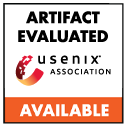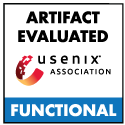Ryan Little, Boston University; Lucy Qin, Georgetown University; Mayank Varia, Boston University
If a web service is so secure that it does not even know—and does not want to know—the identity and contact info of its users, can it still offer account recovery if a user forgets their password? This paper is the culmination of the authors' work to design a cryptographic protocol for account recovery for use by a prominent secure matching system: a web-based service that allows survivors of sexual misconduct to become aware of other survivors harmed by the same perpetrator. In such a system, the list of account-holders must be safeguarded, even against the service provider itself.
In this work, we design an account recovery system that, on the surface, appears to follow the typical workflow: the user types in their email address, receives an email containing a one-time link, and answers some security questions. Behind the scenes, the defining feature of our recovery system is that the service provider can perform email-based account validation without knowing, or being able to learn, a list of users' email addresses. Our construction uses standardized cryptography for most components, and it has been deployed in production at the secure matching system.
As a building block toward our main construction, we design a new cryptographic primitive that may be of independent interest: an oblivious pseudorandom function that can either have a fully-private input or a partially-public input, and that reaches the same output either way. This primitive allows us to perform online rate limiting for account recovery attempts, without imposing a bound on the creation of new accounts. We provide an open-source implementation of this primitive and provide evaluation results showing that the end-to-end interaction time takes 8.4-60.4 ms in fully-private input mode and 3.1-41.2 ms in partially-public input mode.
Open Access Media
USENIX is committed to Open Access to the research presented at our events. Papers and proceedings are freely available to everyone once the event begins. Any video, audio, and/or slides that are posted after the event are also free and open to everyone. Support USENIX and our commitment to Open Access.


